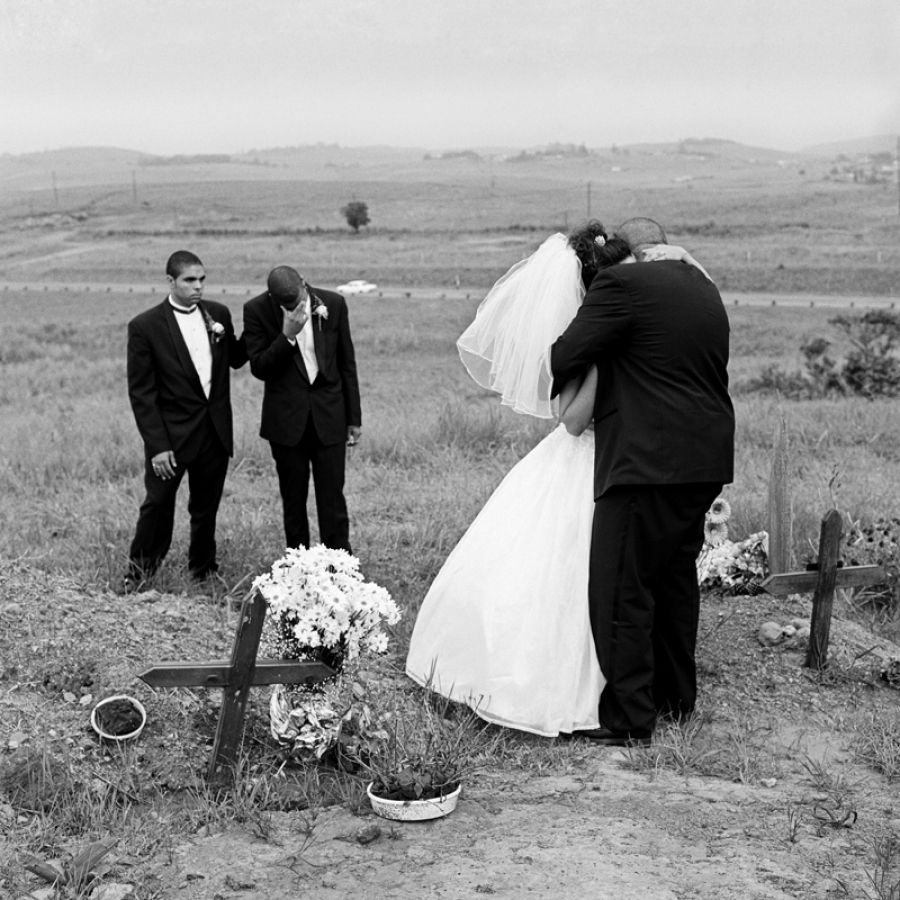
This moving image will appear as part of an exhibition of work by Cedric Nunn at David Krut Projects, New York. It also features in Cedric Nunn: Call and Response published by Fourthwall Books and Hatje Cantz, which will be available alongside the exhibition. Cedric Nunn gives Fourthwall Books two perspectives on the image.
Nunn’s perspective I – the photographer as family man:
I have a tradition in my family to photograph my nephews’ and nieces’ weddings. I’m not a wedding photographer by any means – I do it as wedding gifts. It was an ill-considered idea, because I have a very large family. My great-grandfather had almost 50 wives and 120 kids.
The bride in the image is my niece. She is held by her newly wed husband. One of the young men in the background is her brother, clearly the one who is bowing his head in grief. The other is the husband’s best man.
Her father, my sister’s husband, had died a few months before the wedding. He had been diagnosed with cancer and less than two months later he was dead. So the family had been through quite a traumatic time. The wedding was almost called off, but then her family decided that her father would have wanted her to continue with the wedding. So she did that and she dedicated the ceremony to him.
Because they live in a small community, the church in which he was buried is the same church that the marriage took place in. So the cemetery was of course right next to the church. Immediately after they had made their vows, just this small group and myself came out to the cemetery. The others stayed at the church – I think it was just too emotional for them.
Nunn’s Perspective II – the photographer as photographer:
I didn’t at all see it as an opportunity for poignancy. My niece had in fact asked me specifically to photograph the wedding in colour and in black and white, so I had a camera with black-and-white film. It was just one of those days – wherever you point your camera, some sort of magic seems to happen. I was presented with an extraordinary moment when she really just was overcome with emotion.
The quite poignant landscape, the seeming barrenness of it, adds to that feeling of being bereft. But I guess what makes it so powerful is that there is a sense of hope there also. In the midst of the sea of desolation and bereavement you feel what it’s like to be human and to be held and comforted through grief.
I felt a bit sensitive about bringing a very personal family image into the public domain. But my sister and the couple are just very proud that the moment could be elevated into something else and become an enduring moment.
More information about the exhibition.
More information about the book.